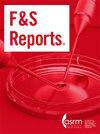Real-world use of an artificial intelligence–powered clinical decision support tool for ovarian stimulation
IF 2.2
引用次数: 0
Abstract
Objective
To understand how treatment decisions and patient outcomes change with physician utilization of artificial intelligence (AI) to help determine follicle-stimulating hormone (FSH) starting dose and trigger injection timing during ovarian stimulation.
Design
Retrospective cohort study with historical controls.
Subjects
Patients undergoing ovarian stimulation by multiple physicians at one in vitro fertilization clinic in the United States.
Exposure
A total of 292 patients were treated between December 2022 and December 2023 with adjunctive clinician use of AI to help select starting dose of FSH and timing of the trigger injection. These were matched to 292 historical control patients treated between May 2019 and May 2022 by the same physicians without AI.
Main Outcome Measures
The primary endpoints were the starting FSH dose, total FSH dose, and number of metaphase II (MII) oocytes retrieved at the end of stimulation.
Results
The use of AI did not introduce any adverse events. After patient matching, there were no statistically significant differences in age, body mass index, antimüllerian hormone, or antral follicle count between the treatment and control groups. Comparing the treatment arm with the control arm, the average number of MII oocytes was 11.17 vs. 11.25, the average starting FSH dose was 397.09 IU vs. 443.84 IU, and the average total FSH dose was 4,181.77 IU vs. 4,654.71 IU.
Conclusion
Physician use of AI helped significantly reduce the starting and total FSH doses prescribed to patients without adversely affecting MII outcomes, indicating the potential use of AI in lowering in vitro fertilization costs to patients.
卵巢刺激人工智能驱动的临床决策支持工具在现实世界中的应用
目的了解医生利用人工智能(AI)帮助确定促卵泡激素(FSH)起始剂量和触发注射时间对治疗决策和患者结局的影响。设计具有历史对照的回顾性队列研究。受试者在美国一家体外受精诊所接受多名医生卵巢刺激的患者。在2022年12月至2023年12月期间,共有292名患者接受了治疗,辅助临床医生使用人工智能来帮助选择FSH的起始剂量和触发注射的时间。这些患者与2019年5月至2022年5月期间由同一位医生治疗的292名历史对照患者相匹配,这些医生没有使用人工智能。主要终点是起始FSH剂量、总FSH剂量和刺激结束时获得的中期II (MII)卵母细胞数量。结果使用人工智能无不良反应发生。患者配对后,治疗组和对照组在年龄、体重指数、抗勒氏杆菌激素或窦卵泡计数方面无统计学差异。治疗组与对照组比较,MII卵母细胞的平均数量分别为11.17个和11.25个,平均起始FSH剂量分别为397.09 IU和443.84 IU,平均总FSH剂量分别为4181.77 IU和4654.71 IU。结论医师使用人工授精可显著降低患者的FSH起始剂量和总剂量,而不会对MII结果产生不利影响,表明人工授精在降低患者体外受精成本方面具有潜在的应用价值。
本文章由计算机程序翻译,如有差异,请以英文原文为准。
求助全文
约1分钟内获得全文
求助全文

 求助内容:
求助内容: 应助结果提醒方式:
应助结果提醒方式:


